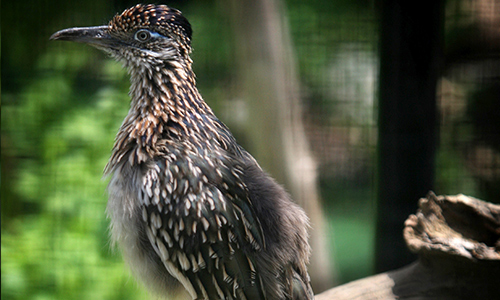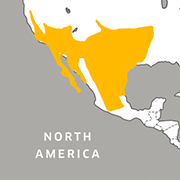Roadrunner
Geococcyx californianus
The roadrunner, a warm-weather species, leaves its habitat around mid-October. Visit our Winter Visits page to learn more about the amazing animals you can see during the winter.
You Can Find This Animal in the Treasures of the Sierra Madre
Committed to Conservation
Zoo New England participates in the Greater roadrunner Species Survival Plan. By sharing research and knowledge, participating institutions work together to establish guidelines that best ensure the health of captive populations, and with success, the survival of endangered species.
Beep, beep!
You may have seen this speedy bird running across your TV screen. As their name suggests, roadrunners actually prefer running to flying. They can run short distances along desert roads at speeds of 15 miles per hour!




